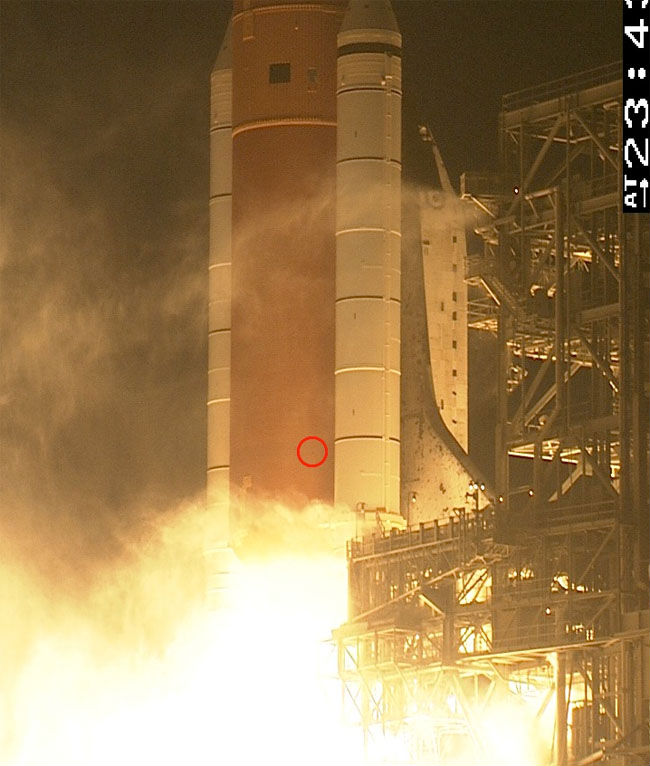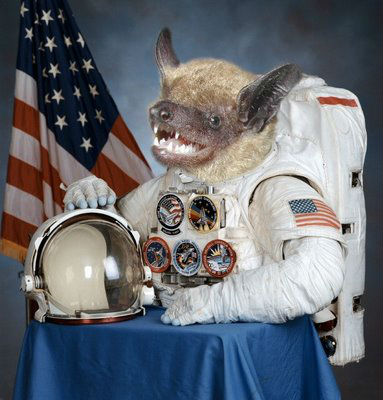On 15 March 2009, when the space shuttle Discovery was about to launch into orbit, a wounded bat grabbed ahold of its fuel tank to become an officially recognised stowaway, despite safeguards that are supposed to keep such things from happening. He was a bat pioneer hell-bent on glory, or so we choose to believe.
So what exactly happened here? The story started on a mild Sunday evening at NASA's Kennedy Space Centre, as crew members began prepping to launch the STS-119 mission. As the crew made their rounds checking for icy buildup on the Discovery fuel tanks and whatnot, they were shocked to find a small free tail bat clinging to the tank's foam insulation.
"Based on images and video, a wildlife expert who provides support to the centre said the small creature was a free tail bat that likely had a broken left wing and some problem with its right shoulder or wrist," NASA explained. Unfortunately, it did not appear to be wearing a tiny spacesuit at the time.
Since the space centre is on the same grounds as the Merritt Island National Wildlife Refuge, NASA has implemented warning sirens that usually deter animals and birds from hanging around the launch pad. Apparently, this particular bat didn't get the message, or just straight-up ignored it, because if he wasn't going to explore the cosmos, what other bat would?
Despite their little bat problem, the team continued to ready the rockets for launch and thought it would eventually wake up and fly off before it was go time. They were wrong. In fact, the bat wasn't asleep or on the verge of unconsciousness at all. It seems like it was just content where it was, even when the engines kicked into gear and the spacecraft began to shake.
"Nevertheless, the bat stayed in place and it was seen changing positions from time to time," the NASA report states.
 NASA
NASA
Using infrared cameras, NASA officials tracked the bat's location to see how its temperature changed during launch. Surprisingly, the area where the bat hung stayed a stable 15 degrees Celsius (60 degrees Fahrenheit) while the bat stayed a cool 21 degrees (70 Fahrenheit), which means it didn't freeze or burn up at the time of the initial launch.
As the rocket took off, the bat stayed put the whole time until it was impossible to track any longer. Though NASA states the poor creature probably perished shortly after take-off, no one really knows, which means you can choose your own ending here if you want. Maybe he flew off just in time? Maybe he's now the first bat astronaut?
An imgur post by a "Mr Fireworks" gets pretty poetic about the bat's uncertain fate:
"Once the shuttle's rockets began pushing its massive frame toward the heavens, he turned his little eyes skyward. The shuttle gained speed, terrifying speed, and he knew he would soon slip the surly bonds of Earth. His grip would eventually fail as Discovery sped faster than a bullet toward the inky blackness of space."
Whatever really did really happen, the small bat has surely earned a place in space history, and that's more than many of us will achieve in our lifetimes. So we salute you, Batstronaut. Your stubbornness courage is an inspiration to us all.
 theinternetisterrible.com
theinternetisterrible.com
 WTFisBehindYou/Reddit
WTFisBehindYou/Reddit
